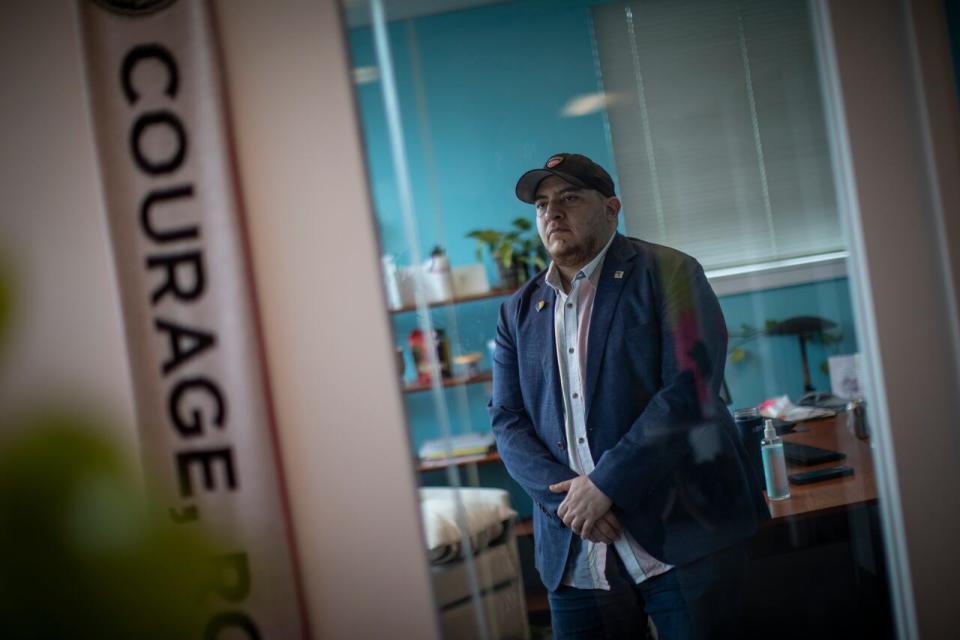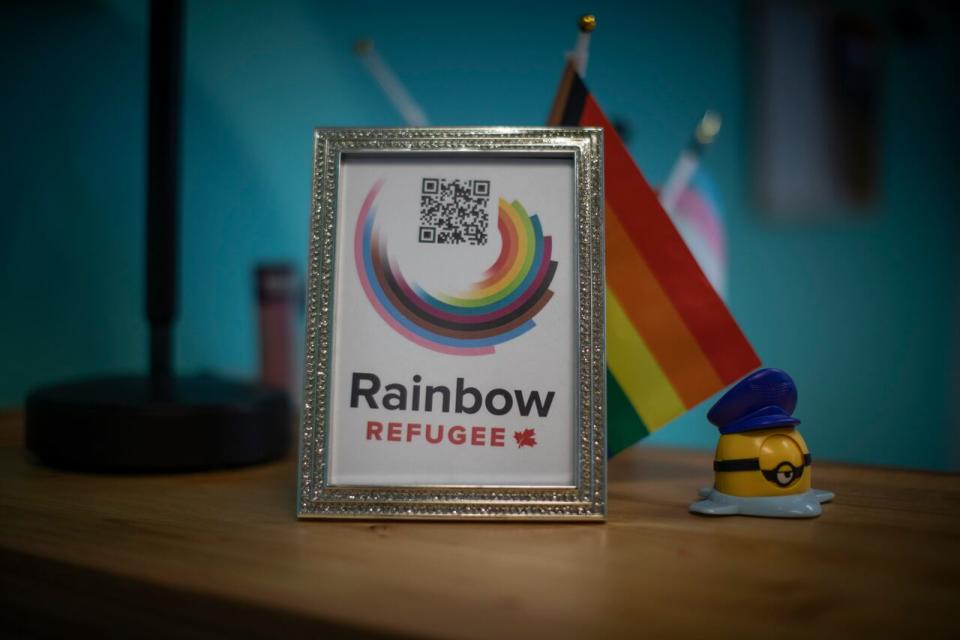Rainbow refugees increasingly look to Canada for safety
Steven Kabuye didn't know what it was like to be gay and safe before he came to Canada.
He fled from Uganda, where an Anti-Homosexuality Act is in place. In January, he was stabbed in the neck, arm and stomach just a few kilometres from his house.
"This person tried to end my life while shouting," Die you homosexual," he said.
In March, he arrived in Canada and applied for refugee protection on the basis of persecution because of his sexual orientation. He's now living and studying in Vancouver while awaiting a decision by Canada's Immigration and Refugee Board (IRB).
According to advocacy groups like Rainbow Railroad, Kabuye is one of hundreds of a so-called wave of "rainbow refugees" who are choosing Canada as a safe haven.
Since 2021, Rainbow Railroad said it's seen an 80 per cent increase in requests for assistance from 2SLGBTQ+ people around the world. The like-minded Rainbow Refuge in Edmonton has also seen its membership triple in the past year as gay newcomers seek legal services, counselling and housing after arriving in the city.
The IRB, which makes decisions on asylum claims, told CBC News it doesn't keep numbers on applications in process, only ones that have been accepted or rejected and couldn't comment on claims of a spike by 2SLGBTQ+ groups.
In a statement to CBC News, it said applications for asylum in Canada in the category of LGBTQ+, accounted for six per cent of all refugee claims in the last three years.

But people who work on the front end of immigration applications, like David LeBlanc, an immigration consultant at Ferreira-Wells Immigration Services Inc. in Toronto, said there has been a noticeable uptick in people coming to them for advice and assistance on asylum claims about sexual orientation, gender identity or expression, sometimes abbreviated as SOGIE.
Many of these people, he said, come from African nations like Uganda and Kenya that have rolled back 2SLGBTQ+ rights.
There are lots of Russians, too, who LeBlanc said fear being outed if they are conscripted for the war in Ukraine.
Regardless of where people originate from, many are fleeing from similar crackdowns and rollbacks of 2SLGBTQ rights, but on the flip side, places that may have once been seen as safe places to go to are changing, too — even here in Canada, where intelligence agency CSIS warned in February that extremists could "inspire and encourage" serious violence against the 2SLGBTQI+ community in the coming year.
An annual report by the U.S. and Canadian charity Rainbow Railroad, released in June, found the United States saw a 523 per cent increase in requests for assistance from people living there. It recorded the third highest pleas for help, behind Pakistan and Afghanistan, with Rainbow Railroad pointing to bills across the U.S. that target gender-affirming care, bathroom access and pronoun use.
"I think the bloom is off the rose for a lot of people looking at the U.S. for safety. Definitely, Canada seems to be almost at the top tier," said LeBlanc.

There are a number of different pathways for a person to claim asylum in Canada, but most require a person to be physically in the country. Once an application is made, Immigration, Refugees and Citizenship Canada will decide if a person is eligible to be referred to the IRB for a hearing.
But starting that process can be the hardest part, said LeBlanc, because getting permission to come to Canada with a valid visa is often the first hurdle.
Changes to policies like the expansion of the Third Country Agreement in March 2023, which allows refugees to be sent back across the border if they came from the U.S., create more roadblocks for people attempting to seek refuge in Canada.
It's a process that, from beginning to end, can take years and involves periods of intense uncertainty, said Aleks Selim Dughman-Manzur, the co-executive director of advocacy for the Rainbow Refugee Society, a hub for housing and other supports, in Vancouver.
It was in September 2023 that Dughman-Manzur, who uses they/them pronouns, noticed a significant climb in the number of 2SLGBTQ people reaching out to their group.
"When you are a foreign person, especially if you have a language barrier, it might take you some time to understand what the process is about," they said.
"It might get really frustrating around each of the stages and the backlogs and the waiting."
But resilience is common too, said Dughman-Manzur, and the people who are eventually settled in Canada more permanently put a lot of work into contributing to their new country.
That's what Steven Kabuye said he's focusing on while he waits for a decision on his refugee claim, though he's also using his time to draw attention to the realities of 2SLGBTQI+ people from where he came.
"As I stand here, I am representing the Ugandan queer voices that cannot have a voice here."


